Sagamore, Bourne bridges have brought prosperity, loyalty and now worries to Cape Cod
On Cape Cod, bridges are more than just a means of transportation. The Cape Cod Canal bridges are icons, passageways to the rest of the world, and an integral part of the economy.
Some Cape Cod residents pride themselves on never, or rarely, crossing either the Sagamore or the Bourne bridges, unapologetic about never leaving the Cape. Others see the bridges as a vital lifeline to the rest of the world. Whatever the perception may be, each Cape Codder — both natives and washashores — and many, many visitors have a relationship with the bridges.
Bourne Bridge is a four-lane span for vehicles — two lanes headed south, onto Cape Cod, and two lanes headed north, off Cape Cod — that crosses the Cape Cod Canal on the canal's western end.
The price tag: Cape Cod bridge replacement costs may soar to $4 billion
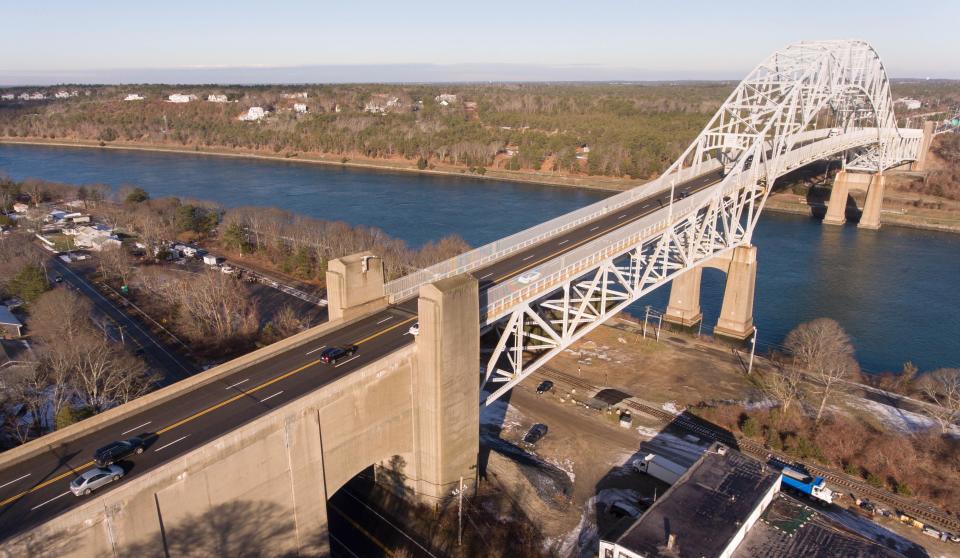
Sagamore Bridge is also a four-lane span for vehicles that cross the canal to the east — same idea, two lanes headed onto the Cape, and two lanes headed off.
There's also a third bridge for trains only.
Both of the bridges for vehicles are nearing a century-old mark.
"I absolutely love the feeling I get. It's like the anticipation of the sand and the air," Kristin Melnick, who lives in Connecticut, said.
Melnick, who was born on Cape Cod, spent every summer, weekend and every vacation on the Cape in South Dennis. Now, with her own children, she's doing the same thing with a place in South Yarmouth, Melnick said.
Chasing the money: Boston meeting reaffirms quest for funding for Cape's canal bridges
"It isn't that different from anywhere else in the world, but to me it feels like it is." she said.
Despite living off Cape, going over the bridge always evokes a visceral feeling.
“Any time I hit that bridge, I take a sigh, you know, a nice deep breath, and I get that feeling that I’m home,” she said.

Curious Cape Cod: Can you name the magnificent 7 bridges of Wellfleet?
But how did these bridges come to be? How have they shaped the landscape of the Cape, and what is the future of the two bridges?
A timeline of construction
In 1904, banker August Belmont II bought the Boston, Cape Cod and New York Canal Company. The company had a charter for the construction of the Cape Cod Canal since 1899, according to the Army Corps of Engineers.
The company’s previous owner, Dewitt Clinton Flanagan, approached Belmont with an idea of building a canal through the Cape that would provide a trade route for ships as well as an emergency waterway for the U.S. Navy, according to "The Cape Cod Canal" by Robert H. Farson.
After conducting engineering studies, Belmont moved forward with plans for the canal, and his company began work on the project in 1909, according to the Corps.
Where's the money?: Construction of canal bridges needs to begin within five years, says Keating
By 1910, Belmont’s company had made significant progress in dredging for the canal. The company had also agreed to build bridges over the canal, according to Farson. A railroad bridge was completed in September 1910, the first Bourne Bridge in 1911, and the first Sagamore Bridge in 1913, according to the Corps.

In their first iteration, the Bourne and Sagamore bridges were electrically operated drawbridges. Each would provide ships that were passing through the canal with 140 feet of space to move through when raised up split in the middle. That narrow opening later proved to be dangerous for ships passing through, according to the Corps.
The mechanism also caused traffic delays, since a bridge had to be drawn for ships to pass through the canal, according to an article by C.M. Spofford in The Military Engineer.
The canal was completed on April 10, 1916. However, it turned out to be a financial bust, as well as a safety hazard for ships, according to the Corps.
Canal is first taken over by the U.S. government during World War I
Then, in 1918 during World War I, President Woodrow Wilson had the Federal Railroad Administration take over the canal. A German submarine had attacked an American tug three miles away from Nauset Beach in Orleans.
Belmont resumed control of the canal after the war but ended up selling the canal to the federal government in 1927 for $11,500,000, according to the Corps.
In March 1928, Congress gave the responsibility of operating and improving the canal to the Corps. Improvements to the canal were made possible in 1933 by $4.6 million from The National Recovery Act, according to "The Building of the Cape Cod Canal" by William Reid. .
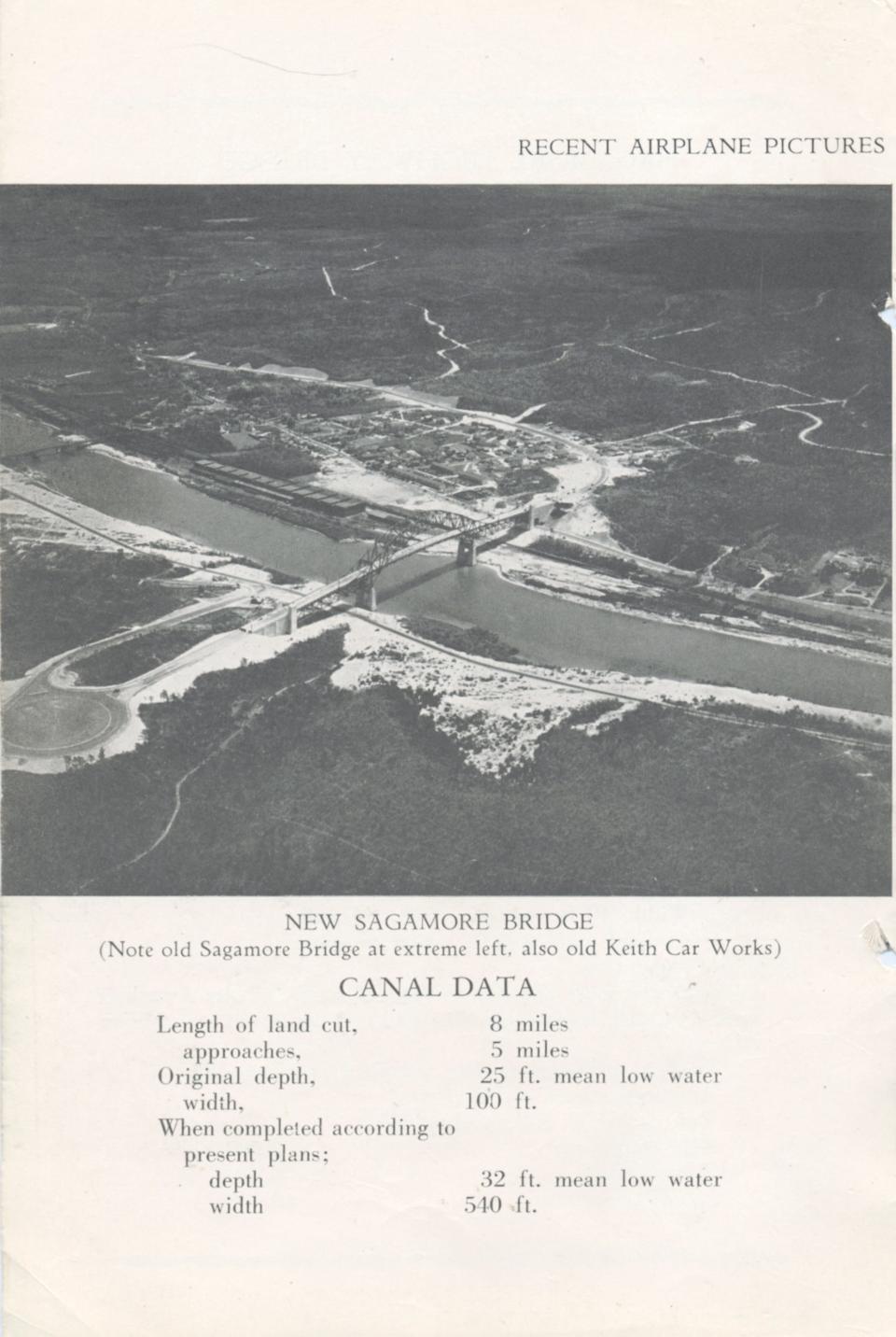
The outlook: Memorial Day weekend forecast for Cape Cod -- Super or party pooper?
When the Corps took control of the canal, the agency asked mariners why they feared using it. Their answers included a narrow channel, swift current, and fear of colliding with the bridges. The Corps planned to deepen and widen the canal to answer some of their concerns, according to Farson's book.
The Bourne and Sagamore bridges needed to be high, fixed structures, so that large ships could pass easily beneath them.
Work on the two new highway bridges began in 1933, providing jobs during the Great Depression, according to the Corps.
The bridges opened to traffic in 1935. They were 135 feet above water, and had a span of 616 feet. A new vertical lift railroad bridge was also constructed with a span of 544 feet, which was the longest lift span in the world at the time, according to the Corps.
Living near a bridge
Jim Poore, a Bourne resident who lives about 600 feet from the west side of that 1935-built Sagamore Bridge, sees it from his window every day. . As a fourth-generation Cape resident, his family home near the bridge is dear to him.It holds all the memories of his childhood, he said.
His ancestors emigrated from Italy.
The Sagamore Bridge still holds sentimental value for him. In old pictures of his family, the bridge is a constant.
“It was always just in the backgrounds of everybody that grew up around here,” Poore said.
How did Cape Cod become a tourist destination?: Heritage Museums provides us with answers

How did the construction of the bridges affect Cape Cod?
Construction of the bridges changed the relationship between the Cape and the rest of Massachusetts, according to the state Department of Transportation.
The bridges allowed Cape residents with cars to drive to jobs on the mainland while simultaneously launching a new tourism industry. In many ways, the bridges are responsible for shaping the Cape that everyone knows today, according to the state agency's website.
"The new structures built between 1933 and 1935 were a substantial upgrade from the previous structures, with a focus on safe and reliable access over the Canal," said Stephen Tupper, deputy director of transportation at the Cape Cod Commission.
Many changes that Cape Cod has experienced over the last 85 years would not have been possible without the Bourne and Sagamore bridges, Tupper said.
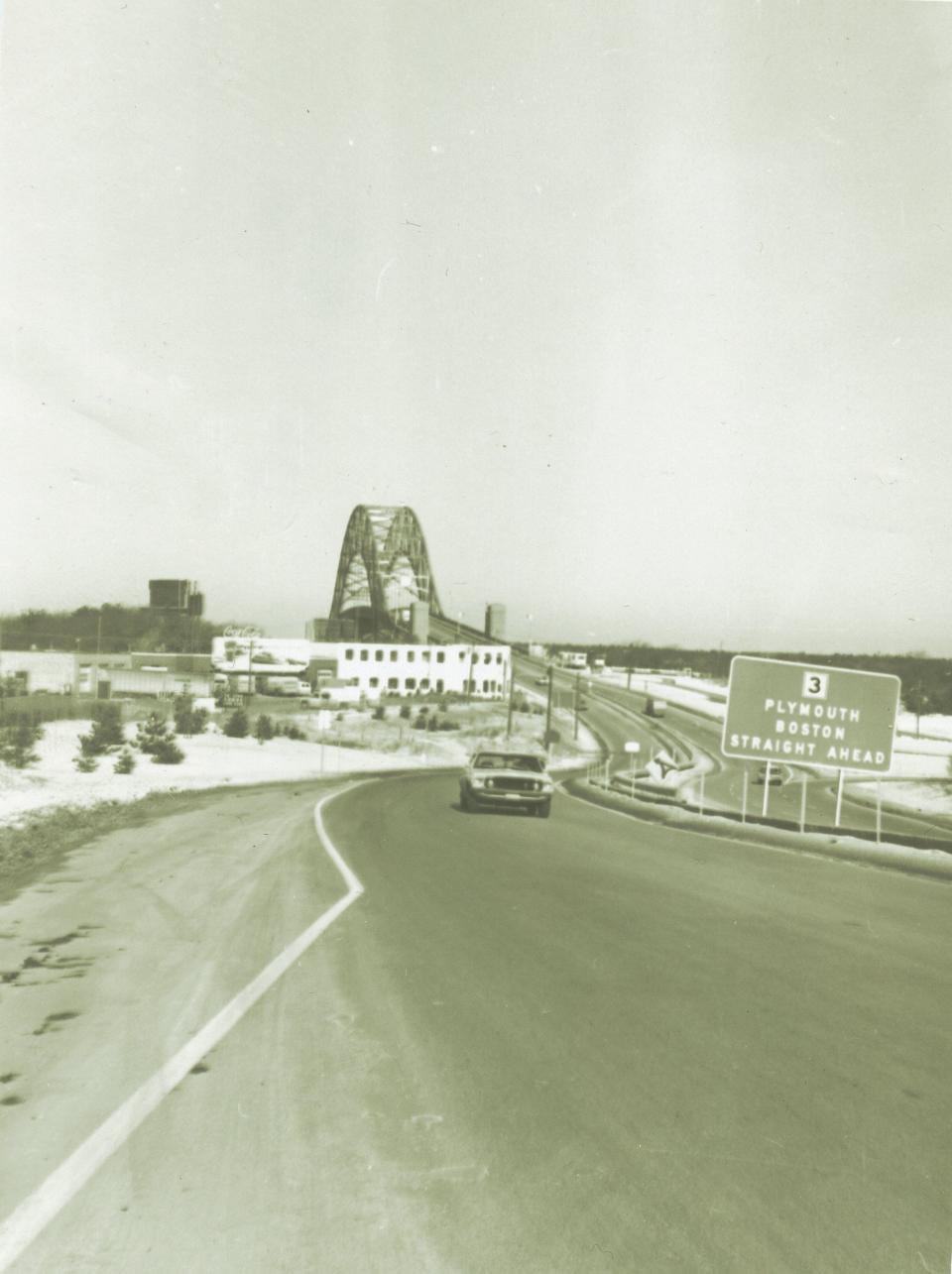
The crush of summer traffic begins right away
On an August day in Sandwich in 1909, the Massachusetts Highway Commission counted 57 horse-drawn vehicles and 75 motor vehicles using the road, according to "Becoming Cape Cod" by James C. O’Connell.
In 1936, a year after the bridges opened to traffic, a report showed 55,000 cars crossed one of the canal bridges on a summer Sunday.
“With their dramatic setting and engineering elegance, the bridges became the physical and symbolic gateway to Cape Cod,” wrote O’Connell.
If the bridges provided the means, the invention of the automobile itself was transformative for the Cape’s tourist economy.
Cars made it possible for tourists to explore the entire Cape, rather thanbeing confined to usual destinations including Falmouth Heights or Hyannis Port, O’Connell said in his book. Motorists could choose their own stops and visit historically significant places that may have otherwise been overlooked.
The collision of the Roaring '20s and the invention of the car was accompanied by a rise in consumerism on the Cape, which helped the resort industry bloom, O’Connell said. Cape infrastructure also modernized while the tourism industry was strengthened, with widespread electricity, police and fire stations, and Cape Cod Hospital.
Cottage colonies, motels, campgrounds, and individual vacation homes also began to compete with resort hotels because of the automobile.
Cars made it possible to eat at places besides hotels or summer cottages. Restaurants, tea rooms, and drive-ins began to pop up in the 1920s and 1930s because of cars, O’Connell wrote.
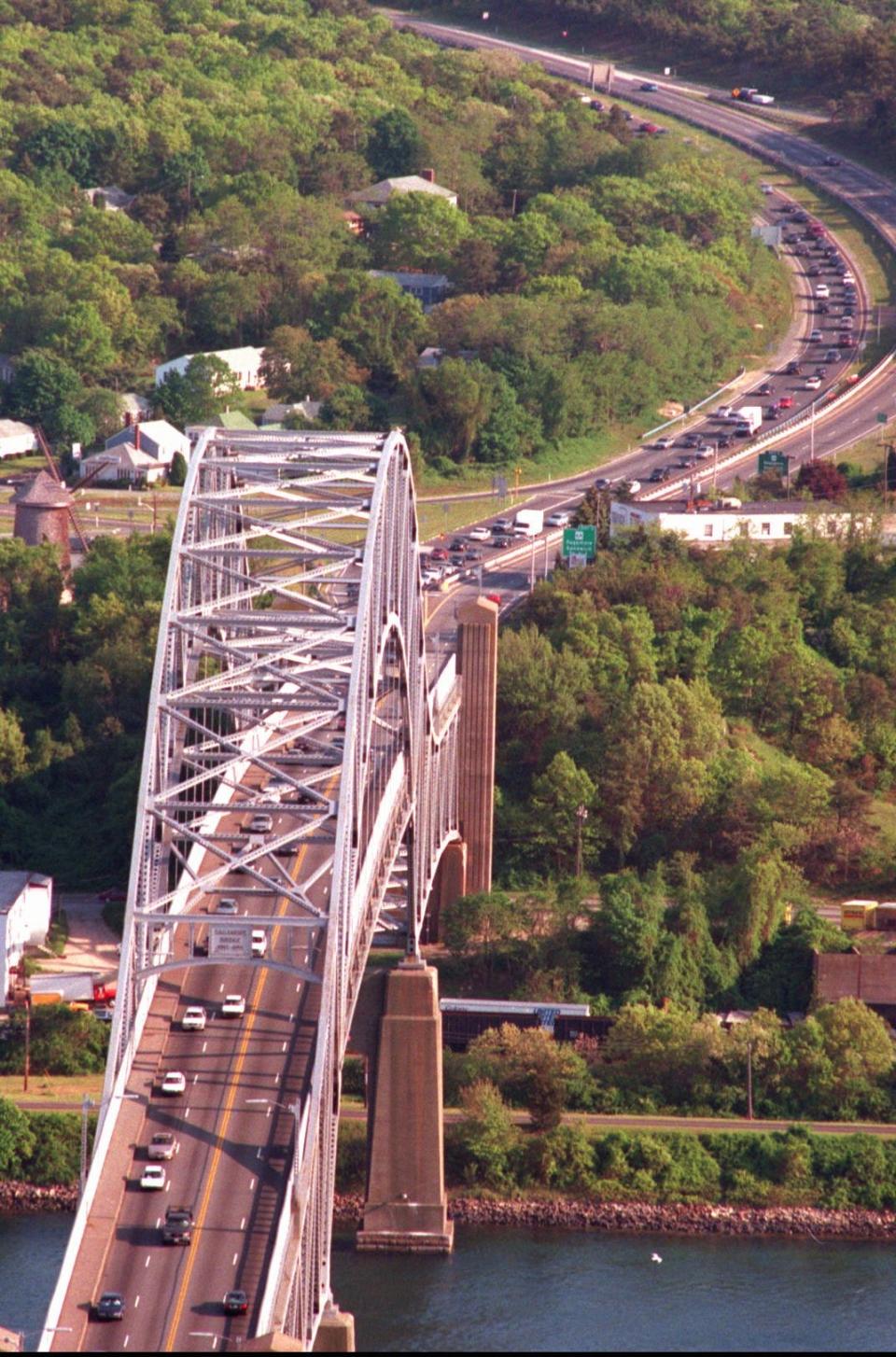
In the years after World War II, the Cape experienced another boom in growth, in large part due to the building of highways.
Highways built on Cape Cod
Highway officials had planned for the Sagamore Bridge to lead into a highway that would go across the Cape. Before that, most development took place along the shore. The highways were meant to ease traffic between villages and expedite travel to the outermost parts of the Cape, O’Connell said.
In 1950, the Mid-Cape Highway opened from the Sagamore Bridge to West Barnstable. Another highway, Route 28, opened in the late 1950s from the Bourne Bridge to Falmouth.
Vacations became more common among middle-class Americans after World War II, creating a boon in tourism. By the early 1950s, tourism became the region’s top industry, O’Connell said in his book.
Population growth between 1950 and 1960 on Cape Cod
The population on Cape Cod also began to grow.
Between 1950 and 1960 the population grew by 50 percent, from 46,381 to 70,286. The motel industry also began to blossom, and the Mid-Cape highway was conducive to resort communities being built inland, away from the coast, O’Connell said.

A weak economy prior to the 1920s made Cape Codders in favor of development, at least up until World War II. After the war, more people on the Cape were concerned with preserving the Cape’s character, and zoning and planning boards were born, O'Connell said.
Regional efforts to control growth began when the Cape Cod Chamber of Commerce asked the state to analyze the problem. State experts found that the amount of development had reached critical proportions, and by the 1960s there was an intense fear of overdevelopment, O’Connell said.
That led to preservationists to work to create the Cape Cod National Seashore, which covers areas in the six eastern-most towns of Cape Cod. More land was designated for conservation area, as well as beaches, O'Connell said.
The population of Cape Cod in 2020 was 228,996.
The bridges undergo first major overhaul
In the early 1980s, the bridges underwent their first major overhaul, according to a report by the Army Corps of Engineers.
In the 1980s, the state Route 25 bypass was created, which serves as a link between Interstate Highway 495 and the Bourne Bridge. That was a major development that affected traffic, since motorists were able to go directly from I-495 to the Bourne bridge instead of going through the village of Buzzards Bay.

In 2008, the Sagamore Bridge flyover was constructed, replacing a rotary that had caused traffic backup. The flyover connected state Route 3 directly to the Sagamore Bridge. The $59 million project was controversial because opponents thought it would bring more development and traffic to the Cape.
What is the status of the bridges today?

Nearly 90 years later, the bridges are now considered “functionally obsolete,” according to the state Department of Transportation. The Army Corps of Engineers conducted a study in March 2020 that showed that replacing the bridges is more viable than conducting major rehabilitation.
If work doesn't begin on replacing at least one of the bridges in the next five years, major rehabilitation may be necessary, which would be more costly and result in a total or partial closure of the bridge, according to U.S. Rep. William Keating, D-Massachusetts, in March 2022.
The fact that the bridges can no longer handle the traffic has harmed the Cape’s economy and poses a risk to public safety, said Marie Oliva, CEO of the Cape Cod Canal Region Chamber of Commerce.
The bridges affect every single part of the Cape’s economy, said Paul Niedzwiecki, CEO of the Cape Cod Chamber of Commerce.
Maintenance of the aging bridges can cause partial closures, which undercuts the Cape’s ability to receive and send goods and services. Because the Cape Cod economy is so connected, a delay in Bourne can affect a delivery in Provincetown, Niedzwiecki said.

“We need those bridges to be reliable, we can't risk the kind of potential complications that come with extraordinarily old infrastructure,” he said.
Tupper, with the Cape Cod Commission, agreed.
"Continued provision of safe, reliable canal crossings is essential for the long-term viability of our economy, the vibrancy of our communities, and our ability to continue to be a place that is loved by residents and visitors alike," he said.
The Corps and the state transportation department are pursuing money , mainly from the U.S. Department of Transportation’s $2.9 billion Multimodal Project Discretionary Grant program and a $12.5 billion bridge investment program.
Replacing the bridges is expected to cost $1.5 billion.
In the town of Bourne
Perhaps no town is as directly affected as Bourne, which provides a home to both bridges.
For Peter Meier, chairman of the Bourne Board of Selectmen, the traffic impacts on the town caused by the bridges are extensive, hurting local businesses.
Construction is sure to create problems, Meier said.
The key for the project to move smoothly is for state and federal officials to communicate clearly with local officials like himself, he said.
More: Cape Cod Canal bridge projects cast pall on neighbors
“Us at the local level, we’re the only voice the residents of Bourne have,” said Meier.
Jim Poore, who lives next to the Sagamore bridge, sees the potential construction approaching and worries that he may lose his family home or be upended.
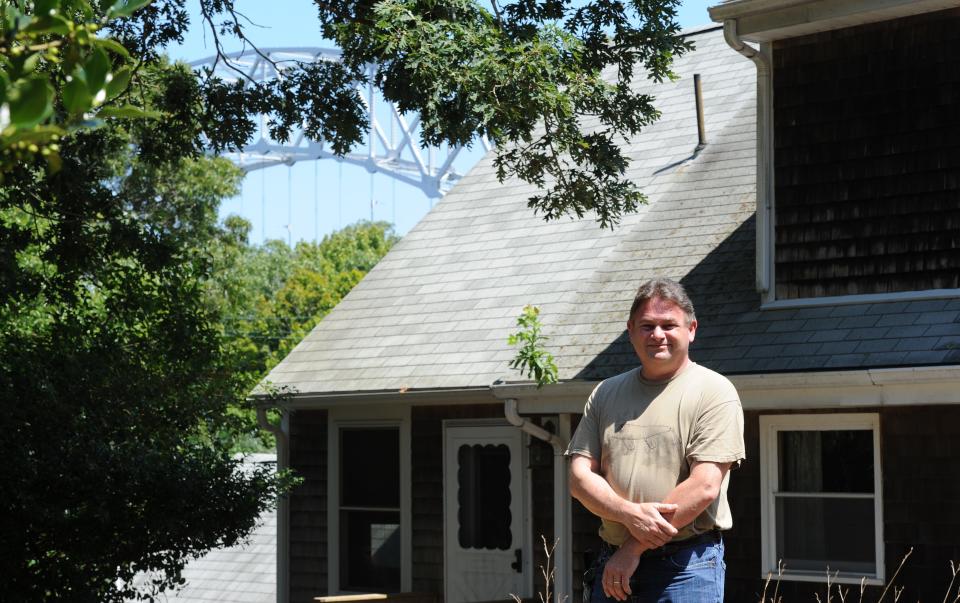
“It's kind of, a little looming and overwhelming to even think about,” Poore said.
He also worries about the effect construction will have on his teenage son, who is getting ready to go to high school. If Poore is forced to leave his home, he’s not sure he’ll be able to find another home in the current housing market.
Not much has been told to neighbors about the next steps.
Poore also has two businesses that he runs out of his home, a salon and an antique store, that he said could be harmed or disappear altogether.
“All aspects of my life are actually impacted by this project on both ends,” he said.
This article originally appeared on Cape Cod Times: Cape Cod's Sagamore, Bourne bridges: History, construction, future

